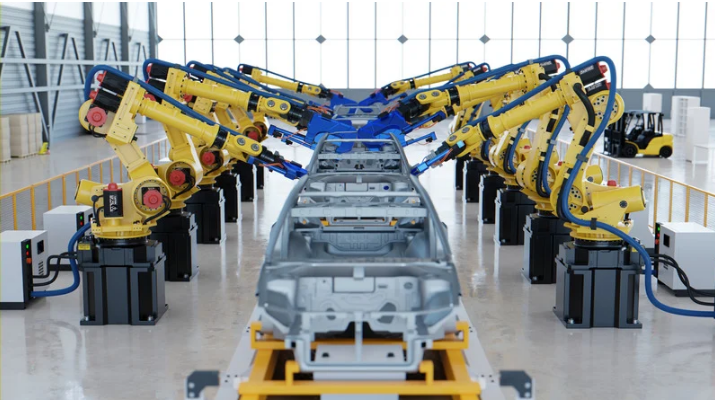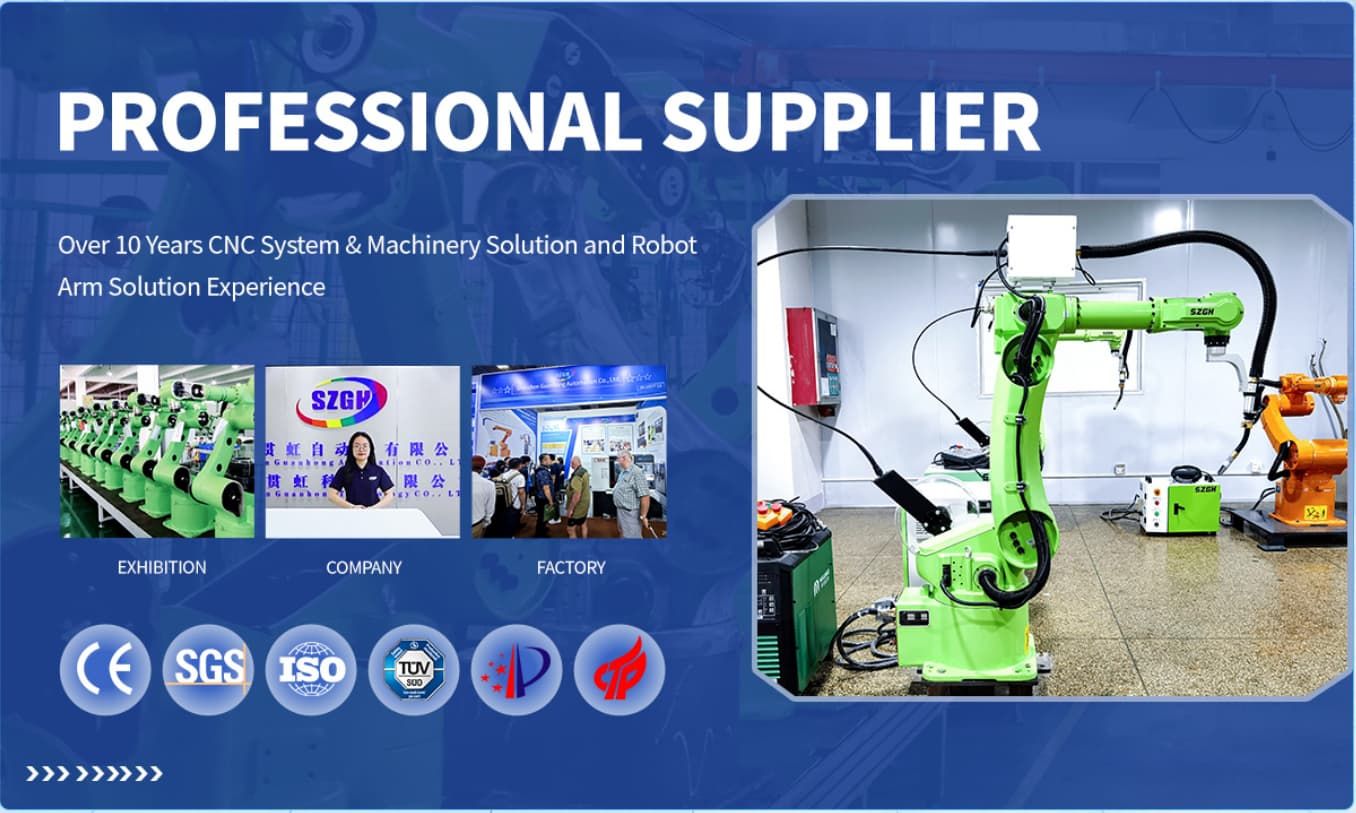Revealed: Why the Automotive Industry Heavily Adopts Welding Robot Arms for Manufacturing Excellence
Oct 11,2025
The automotive industry is increasingly relying on automation to maintain competitiveness, and one technology stands out: the welding robot arm. From mass-producing sedans to crafting luxury vehicles, welding robots have become indispensable in modern car manufacturing.
This article explores the key reasons behind the widespread adoption of welding robot arms in the automotive industry, highlighting how companies like SZGH are driving this transformation.

1. Unmatched Precision and Consistency
The automotive industry demands extreme precision in welding to ensure vehicle safety and durability. A single faulty weld can compromise structural integrity, leading to recalls or accidents. Welding robot arms address this challenge by delivering consistent, high-quality welds with minimal deviation. For example, in car body assembly, where thousands of weld points are required, welding robots achieve repeatability within 0.1mm, eliminating human error .
SZGH’s advanced welding robot arms incorporate laser vision systems, enabling them to adapt to minor material variations while maintaining weld accuracy. This level of precision is critical for components like chassis and frames, where even minor defects can have catastrophic consequences.
2. Boosting Productivity and Efficiency with the Welding Robot Arm
Automakers face intense pressure to meet global demand while minimizing production costs. Welding robot arms excel in this regard by operating continuously across multiple shifts without fatigue. For instance, a welding robot can perform 3-5 times more welds per hour than a human worker, significantly accelerating assembly lines .
In projects like the automated production of commercial vehicle frames, SZGH’s welding robot arms have reduced cycle times by 30% while maintaining stringent quality standards. Their ability to work in tandem with other robots and conveyor systems further optimizes workflow, making them a cornerstone of lean manufacturing in the automotive industry.
3.Enhancing Worker Safety and Reducing Labor Costs via the Welding Robot Arm
Traditional welding exposes workers to hazardous conditions, including toxic fumes, intense heat, and arc glare. By deploying welding robot arms, automakers can reassign human workers to supervisory or programming roles, reducing health risks and improving job satisfaction .
Moreover, the automotive industry benefits from long-term cost savings. While initial investments in welding robots are significant, they offset high labor expenses and turnover rates. SZGH’s solutions include centralized fume extraction and safety interlocks, creating a safer environment while cutting operational costs.
4. Flexibility for Multi-Model Production Offered by the Welding Robot Arm
Modern consumers expect customization, forcing automakers to produce multiple vehicle models on the same assembly line. Welding robot arms provide the flexibility to switch between tasks quickly. Through offline programming and tool-changing systems, a single welding robot can handle diverse welding jobs—from arc welding car bodies to spot welding brackets .
SZGH’s welding robot arms feature modular designs compatible with IoT-enabled platforms, allowing real-time adjustments for different product variants. This agility helps automotive companies respond to market trends without retooling entire production lines.
5.Meeting Stringent Quality Standards with the Welding Robot Arm
Regulatory bodies like the ISO and automotive safety commissions impose rigorous welding standards. Welding robot arms ensure compliance through data logging and quality monitoring. Sensors embedded in SZGH’s robots track parameters like heat input and weld depth, generating reports for audits and process improvement.
In electric vehicle battery tray assembly, for example, welding robots prevent thermal runaway by ensuring perfectly sealed joints. This attention to detail is vital as the automotive industry pivots toward EVs and lightweight materials.
6. Technological Advancements and Innovation in the Welding Robot Arm
The integration of 3D and IoT has transformed welding robot arms into smart systems. Machine learning algorithms enable predictive maintenance, reducing downtime, while 3D simulation tools optimize robot placement and movement . SZGH stays ahead of trends by incorporating collaborative welding robots that work alongside humans for complex tasks like overhead welding.
These innovations align with Industry 4.0, where interconnected welding robots share data to enhance efficiency across the automotive industry.
Why Choose SZGH Welding Robot Arms?

As a front-runner in industrial automation, SZGH builds welding robots that are tailor-made for the automotive industry. We understand the sector’s relentless demands for accuracy, speed and zero-downtime reliability—every model is therefore engineered, tested and refined down to the last micron.
Our best-seller, H1500-B-6, is specifically designed for automotive-parts welding and offers the following outstanding credentials:
Best-in-Class Specs
Payload: 6 kg—ideal for car-body components
Reach: 1,500 mm—covers more fixtures, saves floor space
Repeatability: ±0.05 mm—every weld spot is identical
Max. joint speed: 150° s⁻¹—cycle times slashed
Protection: IP67—thrives in oily, dusty plant environments
·Innovative Design
The robot features an integrated servo-drive architecture that houses all amplifiers inside the cabinet. Installation time drops 30 %, maintenance costs 25 %. One Tier-1 supplier reports mean-time-to-diagnosis down from 2 h to <30 min.
Multi-protocol support (EtherCAT, Profinet, Ethernet/IP) lets the unit plug straight into existing car lines; customers record 40 % shorter integration lead-times.
·Proven Performance
In chassis-welding lines the H1500-B-6 delivers:
+35 % throughput
99.7 % first-pass yield
–25 % energy consumption
–60 % manual labour
Aerospace-grade aluminium keeps the arm light yet stiff, boosting acceleration 25 %—more welds per takt, no extra hardware.
·Real-World Results
On EV battery-tray lines the robot holds distortion ≤ 0.1 mm, extending pack life and meeting the strictest safety standards.
Total Support Package
Pay-back typically 12–18 months
Choice of spot, MIG, laser or hybrid welding packages
·Full-life service: commissioning, training, spare-parts, 24/7 hotline
A ready-to-use welding process library slashes beginner training by half; intelligent seam tracking and real-time parameter adjustment cut weld defects 70 %, ensuring each joint meets automotive OEM quality every single time.
Conclusion
The automotive industry’s reliance on welding robot arms is no longer optional—it’s essential for survival in a high-stakes market. From ensuring precision and safety to enabling flexible manufacturing, welding robots are reshaping how cars are built. As technologies like AI and cobots evolve, SZGH remains committed to providing cutting-edge welding robot arms that empower automakers worldwide.
MORE BLOG
Copyright © ShenZhen GuanHong Automation Co.,LTD All rights reserved.




